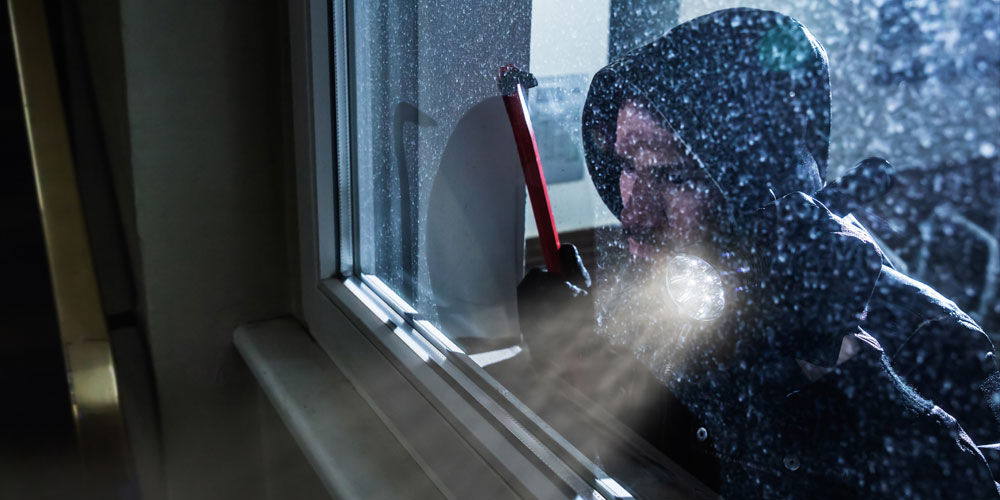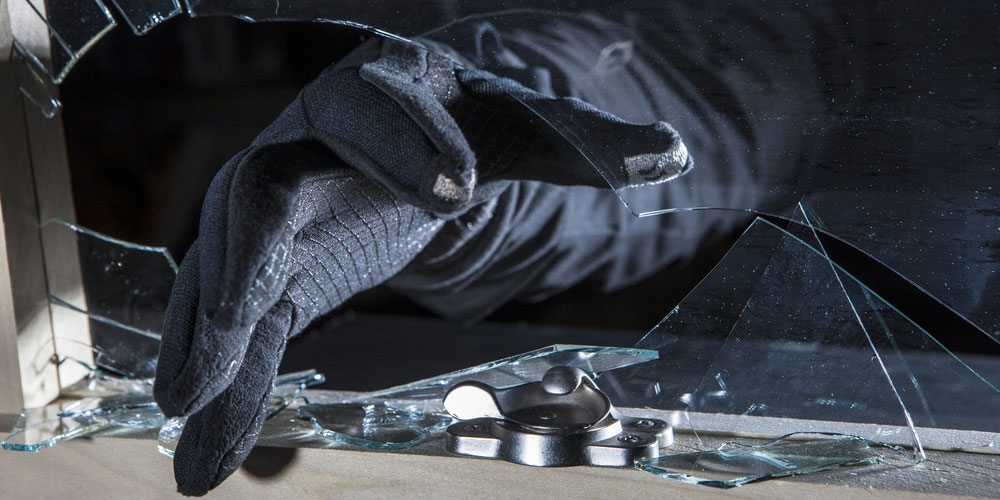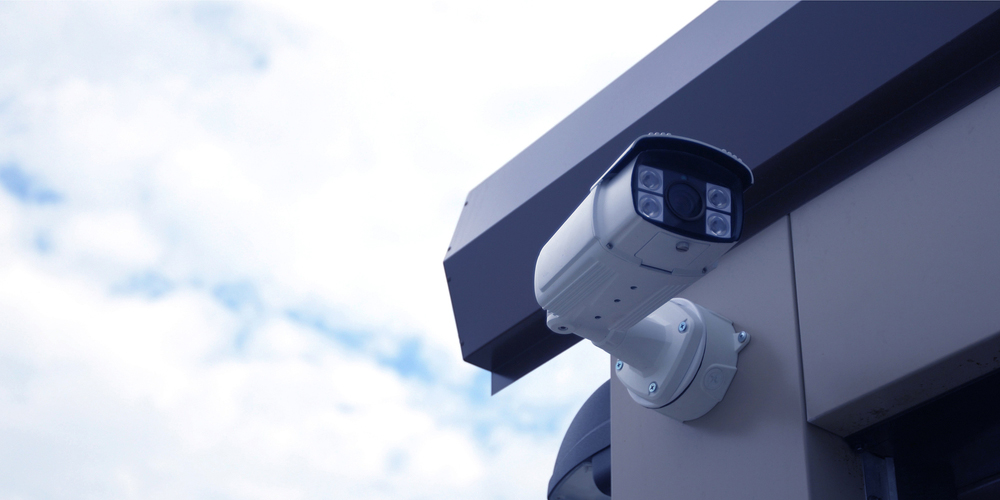Lock Blog
A resource for consumers, locksmiths, and security professionals
A resource for consumers, locksmiths, and security professionals

To take advantage of better home security, you have to understand the demands your security devices place on you. Can you passively sit by as your security defends your home, or does your security demand your immediate response in order to protect anything?
When assessing your home security, it is important to figure out the right blend of passive and active security. Blending these forms of protection provides better home security by staving off criminals as they attack your home and increasing the chances of someone responding to the incident.
We will go over the differences between passive and active security, give examples, and hopefully clear up any misunderstandings about what it takes to get better home security.
The types of security devices we will investigate are:
Breaking concepts down into a binary provides the lowest level of differentiation, turning one into two. This single split forces us to impose a value structure on the concept of better home security. In our case, this will be the value of action. Does your security require action to function?
If a guard does not stop a trespasser or an alarm blares with no one to hear it, there is no security beyond the suggestion of protection. Just as an unlocked door is not secure, an alert is only worthwhile if the alert elicits a response.
Security can allow you to be passive or require an active participant. Passive security provides a level of protection regardless of your response, whereas active security requires you to act to protect. Both can deter crime, but a crime is thwarted either passively or actively.
If you are preventing a home invasion, you will be there to respond. But if you are not inside your home, your property needs to stay secure without you. How much you rely on one form of security determines how much your security relies on you.
Key Takeaways:
Devices and products that provide active security protect your property as long as you use them as intended. The level of security each product offers will vary, but they all depend on proper installation and maintenance to achieve full effectiveness.
Even the cheapest lock provides a level of passive protection. Criminals are most likely to test exterior doors and windows to see if they open before attempting to overwhelm your security. As long as these barriers remain closed, you and your property are protected.
If you are using the wrong lock for your door or have a broken lock, these devices can harm your security. A malfunctioning lock can keep a door or window from properly closing, leaving a gap or sometimes causing a door to swing wide open.
Instead of waiting until after a home burglary to change locks, check that your locks are protecting you from the most pressing threats. For better home security, you have to use better locks. Common elements of high-security locks use security pins, strong metal, and patented keys.
Key Takeaways:
A door is the securest boundary you can install a lock on. For better home security, use a door with more substantial material such as hardwood or metal. If your door is partially glass, additional security is needed. The more solid construction the door has, the more secure it is.
A solid wood door is the most standard front door, but solid core doors and hollow core doors are also likely used in a home. You can also use metal frame doors for more strength. If you have invested in a good lock, you want to put it on a strong door.
The role of doors in home security is to compliment your locks and entryway. That is why things like garage door lock replacement or changing a gate lock can be complicated. You have to factor in how the lock and door interact to achieve better home security.
Key Takeaways:

Most windows do not offer much protection, but they are still a form of passive security. For better home security, you need better window security. The simplest way to improve your windows is by covering them in security film.
High-quality security film keeps glass from shattering when it is struck. The glass will still be damaged by an attack, but like all passive security, it will buy you time and perhaps create enough of a hassle that a criminal abandons their pursuit.
If the glass pane is not large enough for someone to slip through, it may still be possible to reach through and manipulate a nearby lock. Part of better home security includes thinking about how windows affect locks. A window can show criminals the security in a home.
A door near a window could use a double-sided deadbolt, so someone does not think to break the window and manipulate the lock. But patio door lock replacement might not provide better home security in this instance because the glass is too large.
Key Takeaways:
There are several ways to go about active security. You can document a crime, make a crime more visible, or send alerts to desired respondents. But you can only achieve better home security through these means if you or a third party is prepared to act on the information.
Making the entrances around your property visible is a key element of perimeter security. You do not want criminals to be able to hide from the watchful eyes of neighbors and bystanders. Lots of light can deter a thief, but only responding to their presence will stop them.
Many times criminals will test your response by approaching the home to check if anyone gets confrontationally suspicious. If someone approaches them or greets them, it is often enough to prevent a crime. Thieves know being visible means nothing if no one cares about what they see.
Using motion sensor lights is good for drawing attention to an area only when there is movement, but these devices still need a human response. Criminals assume residents ignore these lights, so it is up to you to react in order to have this type of security work.
Key Takeaways:

Surveillance cameras have become common in residential settings, sold as “security cameras.” However, decades of studies on the effectiveness of cameras for security have demonstrated they only affect preventing crime when paired with other security measures.
If you find the best places to install cameras within and around your home, you can discover threats and learn how to improve your security. But you have to take in that information and act. The cameras by themselves do very little to provide better home security.
When you are upgrading your home security yourself, a camera might seem like a good addition, but it is nothing without realistic expectations. For example, it will not prevent property theft, nor will it be used to get your property back. Video footage can help with prosecuting a criminal, but sadly, it very rarely assists in catching them.
Key Takeaways:
Some houses are targeted because they have alarms. This may be a signal that there is something inside worth protecting. Certain thieves have experience with specific systems and know how to disable them. So you have to think of an alarm system beyond a deterrent.
If a criminal can tell that your alarm does not call out to a security company or the police, it may not even deter a break-in. What really matters to better home security is someone to respond to the alarm. It is not enough to think a loud noise is going to attract attention, let alone help.
Many times people will ignore alarms. This is because most people’s only interactions with alarms are with false alarms. So neighbors are unlikely to even get out of bed until the alarm has been blaring next door for a few minutes.
Most of the time, alarms are not effective home security improvements because users do not understand they still have a role in creating better home security. You can invest in a guard door and training, so your alarm also responds, but a dog still needs your help dealing with an intruder.
Key Takeaways:
Because passive security measures seem to actively protect you, you could think of calling it active protection. Except locks, doors, and windows don’t act, they exist. And active security is not passively protecting you, even though it exists passively.
A lock is not a lock because it locks but because it opens. You need to deactivate security, or you would be trapped by it. This means all security must, at times, be reactivated. Passive security needs to be activated as well, but it needs the user’s active response.
Passive security is improved if you can respond when it is being tested. Even the best front door locks cannot withstand prolonged brute force attacks. You want your passive security to buy enough time for someone to notice and respond to the break-in attempt before it succeeds.
Every type of security requires proper use and must be kept in working order. Passive security such as locks, doors, and windows can be improved so they keep criminals from breaking in. Active security does not keep criminals out but can help you know when they are around.
For better home security, you need both passive and active security. Even the best passive security cannot ward off burglars forever. Someone must be alerted to fend off truly dedicated criminals.
It is always preferable to rely on passive security overactive. If you do not improve your front door security with a good lock and solid door, you might not have time to react to what is happening. Take it from United Locksmith, “security starts with a good lock.”
Category: Residential, Safety & Security